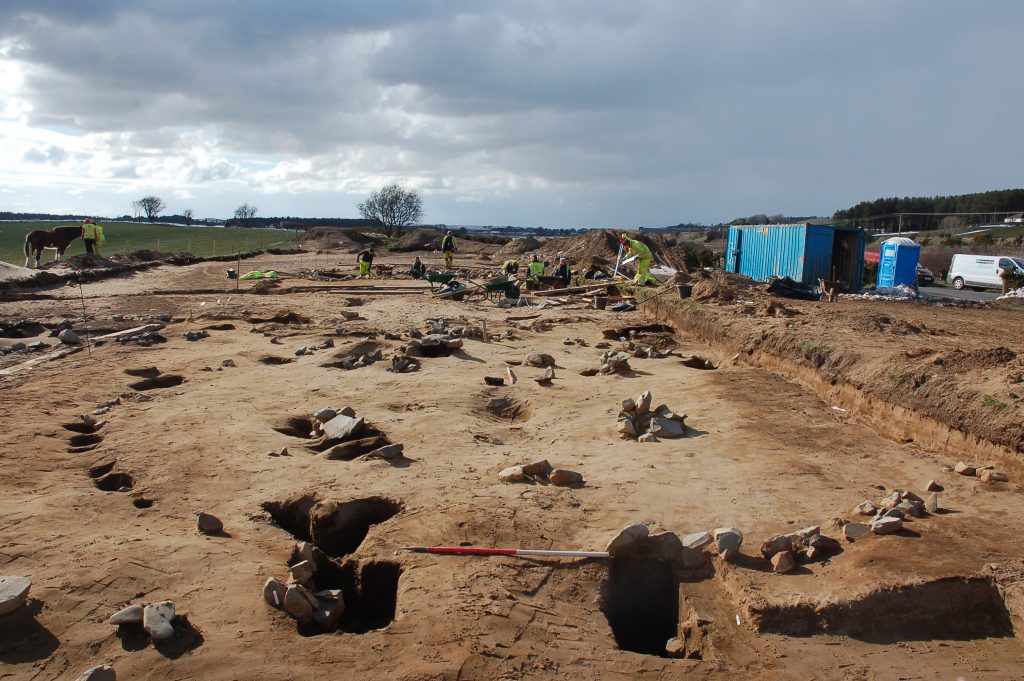
The archaeology discovered during these works represents a rich prehistoric occupation of this area of the Dumfries and Galloway coastline over some eight millennia. Among the findings were Mesolithic and Neolithic structures, a Bronze Age funerary complex including urn cremations and grave goods such as jet beads and flint tools and an extensive unenclosed Iron Age settlement. It is important to realise that the archaeological excavations at Dunragit predominantly gathered tangible archaeological evidence. This evidence needs to be analysed to make sense of what the archaeological remains mean. So the archaeological fieldwork is just the beginning of a long process of investigation.
Once all of the archaeological fieldwork had been completed, the GUARD archaeologists prepared an interim report. This is termed a Data Structure Report and provides the initial results of the fieldwork. The main purpose of this report is to provide a record of the archaeological features that have been excavated, showing where these features are and offering preliminary interpretation. The Dunragit excavation interim report is important for the subsequent specialist analyses of the finds because it shows the archaeological context from which each artefact was recovered.
